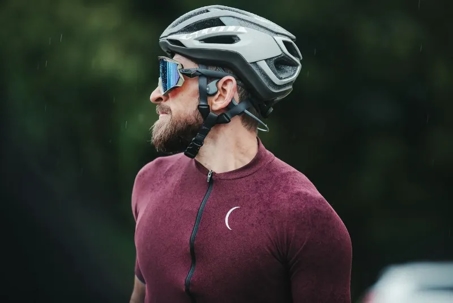There are close to 50 million cyclists and 230 million motorists, in the US, according to statista.com. That means for about every 5 cars, on the road, there is one cyclist. It is the responsibility of both the cyclist and the motorist to drive safely, not only to protect themselves, but also to protect other roadway travelers. Below is a discussion of some safety measures that cyclists can take, along with some safety tips that motorists can practice, as well.
1. Wear a helmet!
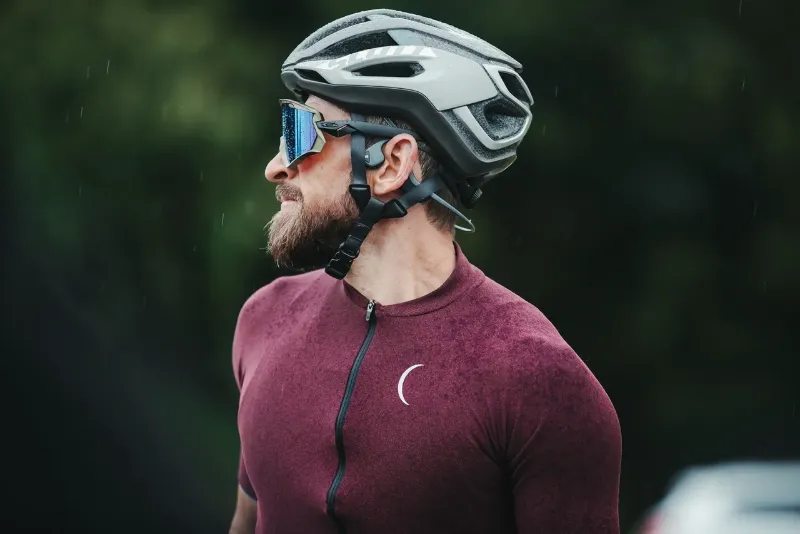
Over 40% of cyclist v. motorist crashes result in head injuries. Another scary statistic, regarding cyclists and head injuries is that 60% of bicycle crash fatalities are the result of head injuries. The severity of these head injuries could have been reduced if helmets were worn. Helmets do not guarantee no head injury in a cyclist v. motorist collision, but they do offer added protection to the skull and brain. The cost of a bicycle helmet ranges from $15.00 to $50.00, but the cost of life- long head injuries, from a cyclist v. motorist crash, can be in the millions. It seems like an obvious and easy choice…wear your helmet!
2. Wear protective gear…wrist pads, elbow pads, knee pads!
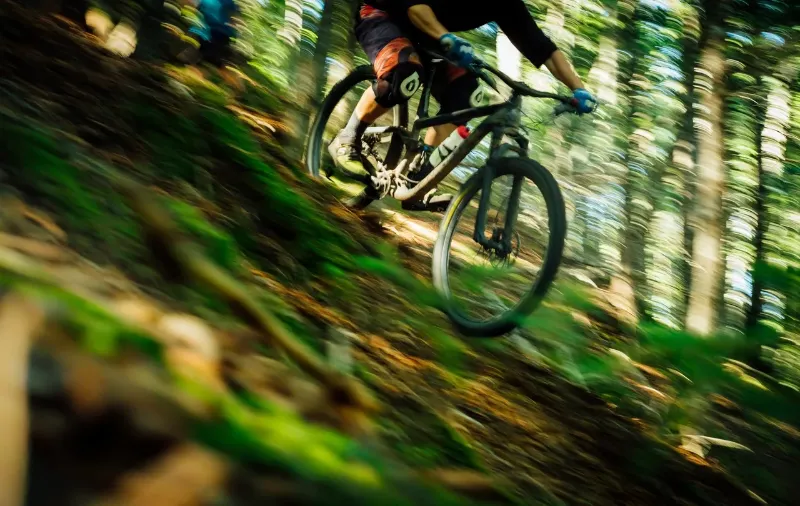
Motorists, in vehicles, are protected by the body of the vehicle; the stability of the metal frame and fiberglass body add protection to the human being inside the vehicle. A bicyclist has no protection from their mode of transportation; for this reason, cyclists need to create their own body protection/body armor. This protection comes from wrist guards, elbow pads, and knee pads. This body armor adds additional protection from other common cyclist v. motorist crash injuries, called fractures, or broken bones. When a cyclist is thrown from their bicycle, depending on how they land, the first thing they will try to do, it put their hands down, to break the fall. Wrist guards, with plastic or metal supports, can help minimize wrist and hand fractures. If the cyclist is thrown down on their side, upon impact, the elbow is one of the of the first parts of the body to slam into the ground; the protection from the elbow pads could help reduce the shattering of the elbow. Lastly, if a cyclist is thrown to the ground, knees first, knee pads would protect the knee, decreasing the chance of a knee-shattering injury. Long story short, wear the protective gear for the additional protection that your bicycle cannot provide for your body.
3. Wear bright clothes!
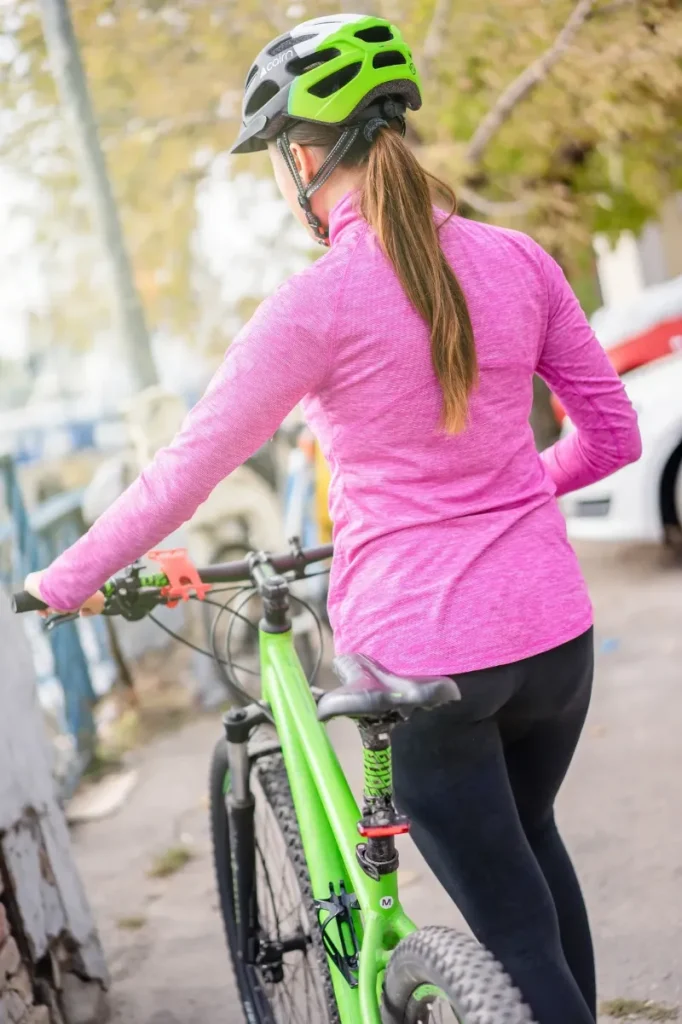
Another safety precaution that cyclists can take is to wear bright clothing. If you are not a fan of the bright orange and yellow safety vests that construction workers wear, visit your local cycle shop for a wide variety of bright, cool-wicking shirts and shorts. If you have pick between a bright colored top and bright colored pants, go with the pants. On a bicycle, your lower body is more in the site line of the motorist. If you can add colored socks to your outfit, even better.
According to bicycling.com, “driver reaction time, for a driver to perceive an unexpected object, recognize it and act (either to slow the car or steer it away from the object) on average, ranges from 1.25 to 2 seconds.” A car traveling only 30 miles per hour, with an undistracted driver, will travel about 55 feet in 2 seconds. Under normal conditions, if a car is coming at a cyclist and the driver doesn’t notice the cyclist, he won’t react in time to avoid a collision. This means, for protection, the cyclist needs to do everything possible to help the motorist see the cyclists, as soon as possible, to allow for as much reaction and braking time, as possible. Long story short, wear the bright clothes!
4. Follow bicycle rules of the road!
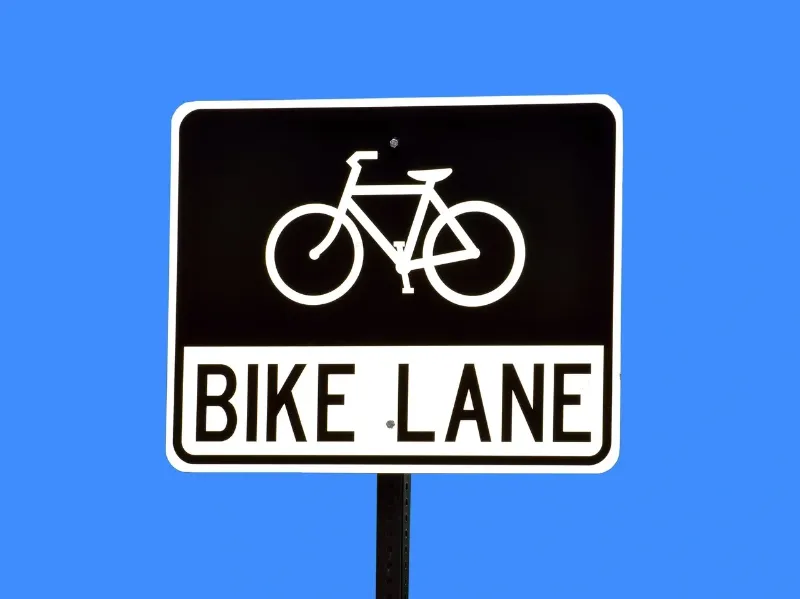
As a cyclist, you need to be aware of the laws, for your state, regarding bicyclists. Below is a list of some laws (with some discussion), regarding cyclists in Texas. These laws, and many more, regarding bicyclists in Texas, are found in the Texas Transportation Code.
Sec. 551.101. Rights and Duties
(a) A person operating a bicycle has the rights and duties applicable to a driver operating a vehicle under this subtitle, unless:
a provision of this chapter alters a right or duty; or
a right or duty applicable to a driver operating a vehicle cannot by its nature apply to a person operating a bicycle.
(b) A parent of a child or a guardian of a ward may not knowingly permit the child or ward to violate this subtitle.
Basically, cyclists have the same rights and responsibilities as motorists, unless there are laws for motorists that could not apply to cyclist, like a requirement for functioning brake lights or annual inspections.
551.103. Operation on Roadway
(a) Except as provided by Subsection (b), a person operating a bicycle on a roadway who is moving slower than the other traffic on the roadway shall ride as near as practicable to the right curb or edge of the roadway, unless:
(1) the person is passing another vehicle moving in the same direction;
(2) the person is preparing to turn left at an intersection or onto a private road or driveway;
(3) a condition on or off the roadway, including a fixed or moving object, parked or moving vehicle, pedestrian, animal, or surface hazard prevents the person from safely riding next to the right curb or edge of the roadway; or
(4) the person is operating a bicycle in an outside lane that is:
(A) less than 14 feet in width and does not have a designated bicycle lane adjacent to that lane; or
(B) too narrow for a bicycle and a motor vehicle to safely travel side by side.
(b) A person operating a bicycle on a one-way roadway with two or more marked traffic lanes may ride as near as practicable to the left curb or edge of the roadway.
(c) Persons operating bicycles on a roadway may ride two abreast. Persons riding two abreast on a laned roadway shall ride in a single lane. Persons riding two abreast may not impede the normal and reasonable flow of traffic on the roadway. Persons may not ride more than two abreast unless they are riding on a part of a roadway set aside for the exclusive operation of bicycles.
In basic terms, if at all possible, cyclists should stay to the right side of the lane, unless they are traveling on a one-way road, then they should stay to the left. Cyclists can ride beside each other as long as it is safe and does not affect the flow of traffic.
5. Share the road!
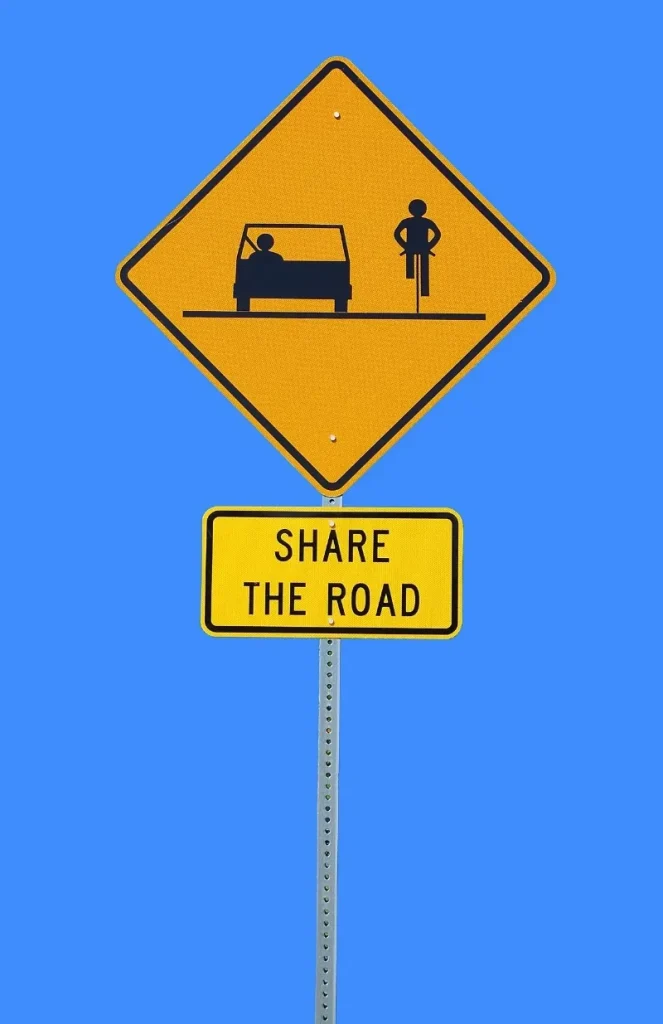
As motorists, in vehicles, we are bigger and take up more of the road, leaving the cyclist at a disadvantage, not only in size, but also in visibility. This puts the burden of being extra aware of our surroundings on the motorist. We need to keep our eyes on the road and this means to minimize our in car distractions. We need to make sure we come to a complete stop, at stop signs; rolling stops, where bicycles are crossing marked intersections, often lead to bicycle v. vehicle collisions and significant injuries, for the cyclist. If a motorist plans to turn right on red, they need to look right, left, then right again and check all mirrors, rear view and side, as well as look in the back window to make sure no cyclists are around. When you are in a parking lot, make sure you have checked all possible points of impact, where a cyclist may be, before you back out.
As motorists and cyclists, if we follow the rules of the road and make room for and keep our eyes out for each other, we can all have safe and happy travels. As always, stay safe!

